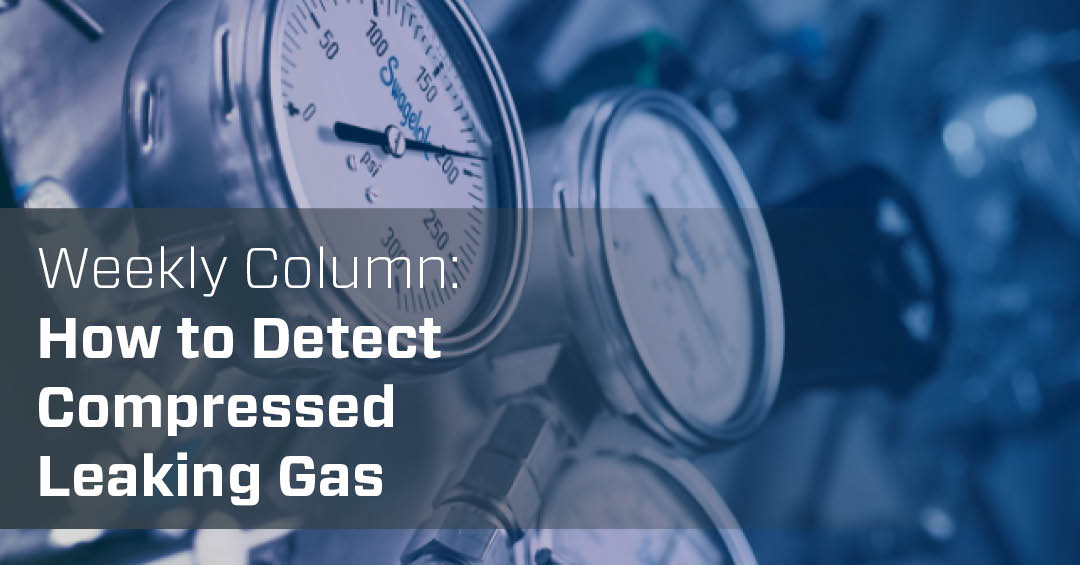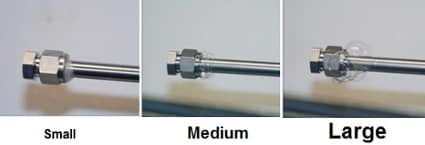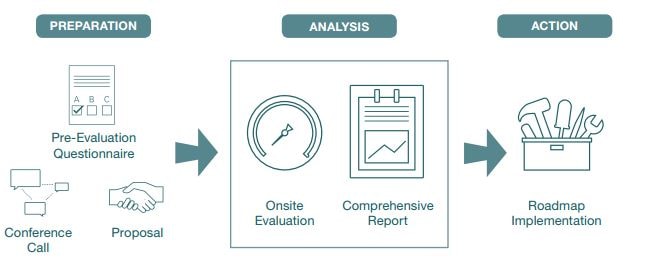How to Detect Compressed Leaking Gas

You expect performance, efficiency, reliability and safety from your in-plant utility systems. In many instances these expectations are simply not met. System leakage is more common than many realize, and even more costly when left undetected. Consider the following case example:
|
Let’s assume the typical efficiency of a compressor at 20kW/100cfm (.2kW/cfm), an electricity rate of $0.09 per kWh, 100 psig and nearly continuous operation. Using the formula to calculate, the annual cost of a leak = Leakage rate (cfm) x kW/cfm x operating hours x $/kWh, a single 1/16” leak would have an annual cost of: |
| 1/16” leak @ 100 psig = 6.5cfm x .2kW/cfm x 6500 hours x $0.09/kWh => $760 |
The example above is a conservative estimate of the potential cost per leak. It’s easy to see how the total annual cost of all system leaks can quickly add up.
What You Can Do
Identifying the leaks is the hardest thing to do. A general assumption is that most leaks typically occur in the “dirty thirty”, that is to say within 30 feet of end use due to the increased prevalence of connections, pressure reducing valves, hoses, etc. Further, most system vibrations also occur at the end use which can increase the incidence of leaks.
1. Apply Leak Detector: While compressed air leaks are nearly impossible to see, the sound of escaping gas will create a subtle hissing noise. Hearing this in an industrial setting may be difficult so in addition you can also look for other visual clues of leakage. Compressed air contains moisture so if you’ve got a leak point, there’s a good chance you’ll spot a damp connection or an area of increased dust accumulation. Finally, you may also employ Snoop Liquid Leak detector which is a solution of water and surfactant. Once applied any leakage will immediately be identified with the generation of continuous bubbles.
2. Use Ultrasonic Leak Detection: Spotting, tagging and fixing leaks in a compressed air system can be an arduous task. Aside from these few subtle clues, compressed air leaks are almost impossible to identify. One of the more sophisticated methods for detecting compressed air leakage is the use of an ultrasonic leak detection device, which is able to recognize the high frequency hiss of escaping compressed air. These devices are, however, prohibitively expensive, but that’s where we can help.
Visualizing unseen gases with FLIR ultrasonic camera
More Than Meets The Eye
Leakage is a problem for all compressed air systems. We have found that about two-thirds of energy costs for compressed air can be significantly reduced without large capital outlay. The solution, our Compressed Gas Leak Detection Program, is a comprehensive evaluation that utilizes the innovative technology of ultrasonic leak detection. We will work with your team to improve system performance and reduce operational costs by our proven process:
- Initial discussion to review your unique situation and needs
- Customized proposal
- In-plant evaluation, in concert with your team
- Detailed report with prioritized recommendations
- Ongoing support and leak prevention training
Leak Detection + Leak Prevention = More Profit
Develop an Ongoing Program
It is important to recognize that leak detection and repair needs to be a continuous process. As a system ages or changes, new leaks can develop and will require your attention. Having a Compressed Gas Leak Detection audit every six to twelve months will help you detect leaks and repair potential, document ongoing energy savings, reduce downtime, lower overall system costs and decrease maintenance costs.
If you’re ready to meet with one of our Energy Management experts, give us a call today. Or, if you’d like to request more information on this or any of our other Evaluation and Advisory Services, fill out our service request form.




